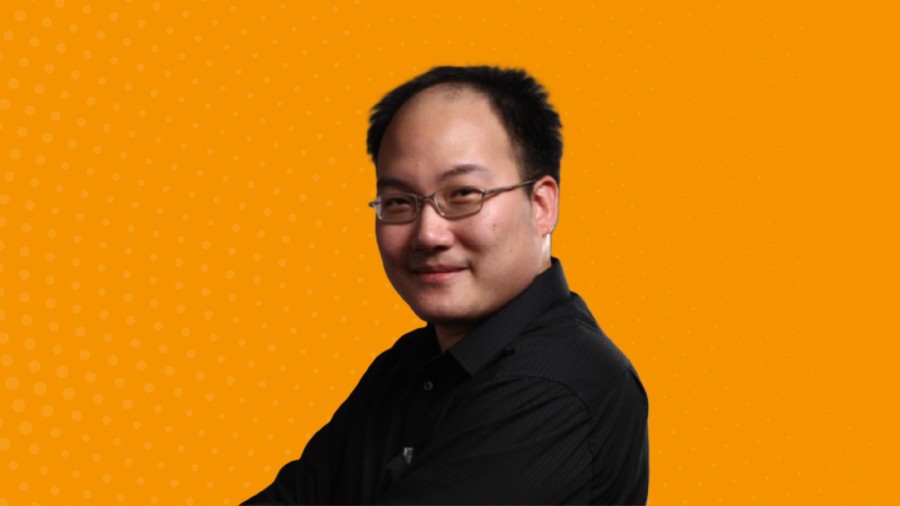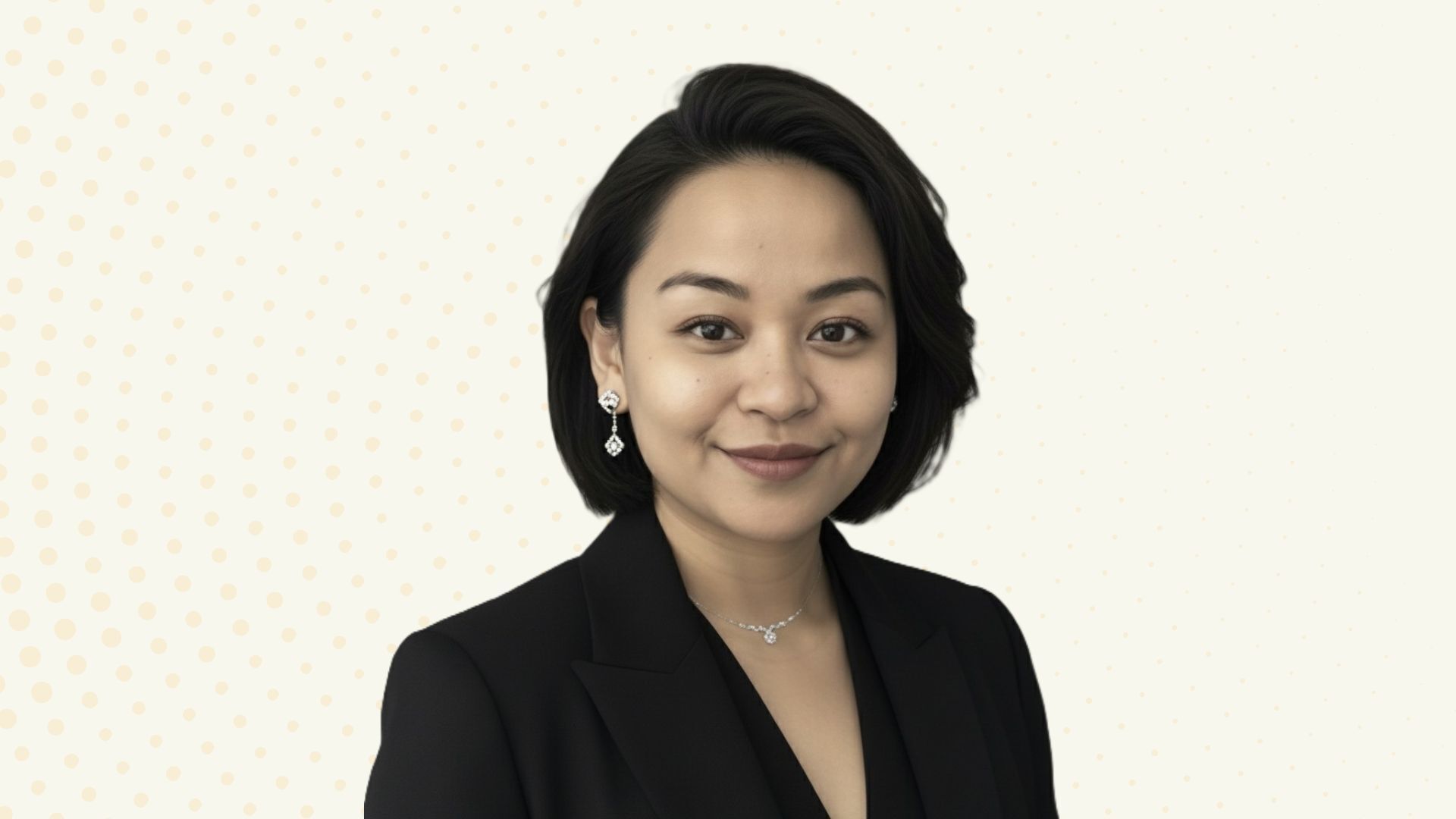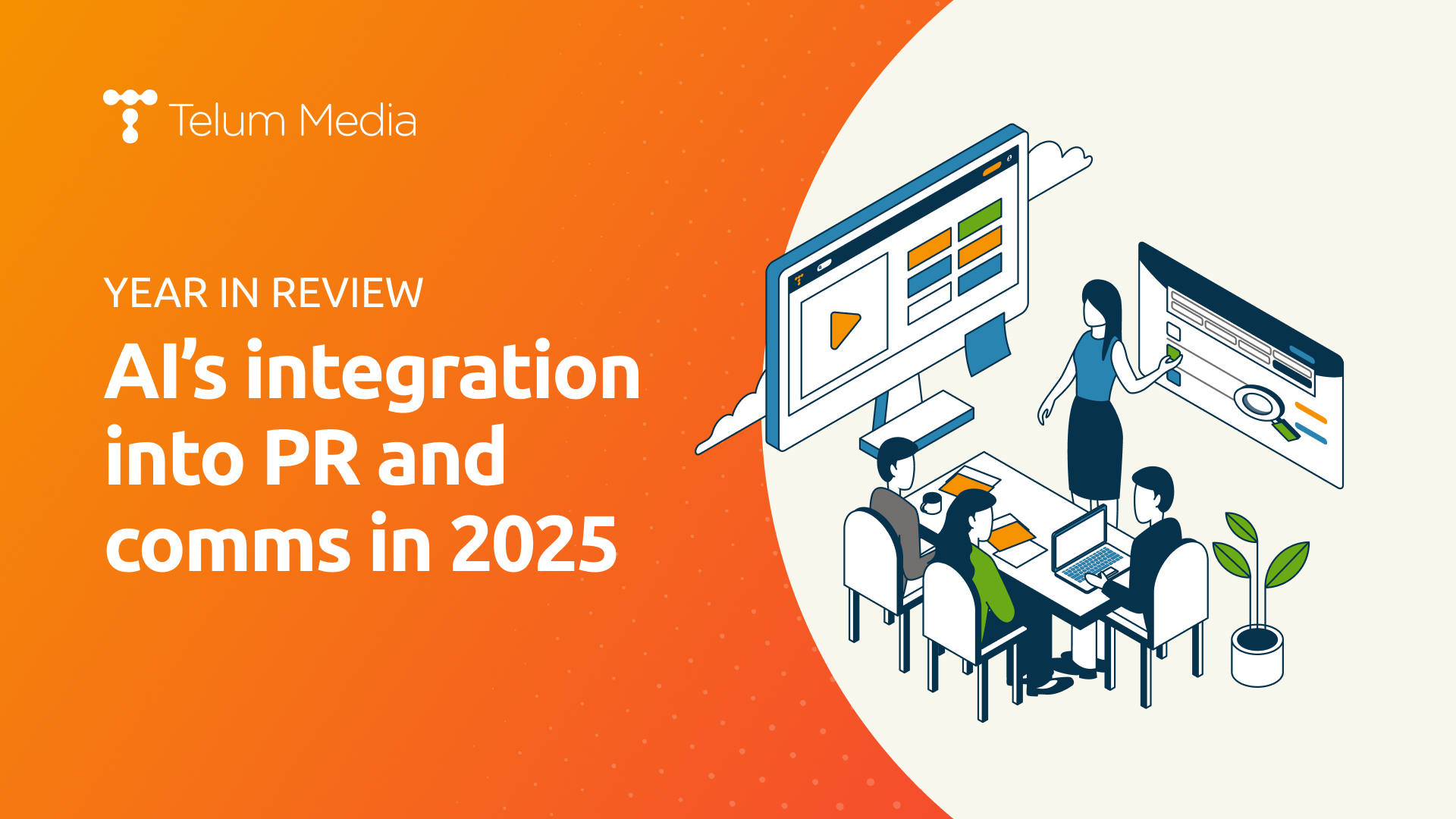Andy Green is a multi-award-winning UK-based PR practitioner who has worked for major brands around the world. He is the Founder of AndyGreenCreativity and has written seven books on creativity and brand communications. He is also a Co-founder of Grow Social Capital and the Dublin Conversations. Telum Media caught up with Andy in Australia, where he had just run a mobile creativity workshop in Melbourne for the IABC called "Tramspiration".
Andy, I wanted to talk about creativity in PR. I was wondering how the move to hybrid working post COVID has affected the creative process. Does it have a big impact on how creative we can be?
It's a mixed blessing in that it encourages people to work independently and from different locations, while also bringing people together. That combination of solo and group working can have a positive dynamic.
The danger I'm really worried about is around age. You learn in the workplace essentially by earwigging - by watching people in action - and you get inspiration. I do worry that there's a generation now with less exposure to good role models, mentors, and just incidental learning.
There's a push to get people back into the office, partly driven by office space costs, but supported by that idea of learning by osmosis from people around you.
Yes, but even then, there's a lot of variety at home. This is an interesting dimension of one of my passions: how your journey to work is perhaps one of the richest parts of the daily schedule for inspiration and stimulus, because you get the most unexpected interventions, masses of stimuli.
The challenge we have, however, is that the majority almost choose to stare at their screen or stare inwardly, be alone with their mind and their thoughts, rather than be energised and engaged with the tremendous opportunity that the journey presents, whether it's a tube, a tram, even in the car.
Let's talk about that journey. You've been over here in Australia running a course called “Tramspiration” - on a tram for a couple of hours to talk about creativity. What's the idea behind it?
The essence of the creative process is essentially framing, so the journey of 100 miles begins with a question.
The more flexible and dynamic you can be in your question framing, the more potentially successful you can be in terms of generating different novel, unusual, creative output.
So really what we do with the "Tramspiration" sessions, or "Tubespiration" when we run them in London, is to get people to identify and work a challenge, and then, through a series of prompts, get them to refine their challenge.
Our first task will be to identify the level of complexity. And the London Underground can work as a metaphor here - Zone 1 problems are very simple, a neat beginning, middle and end. You may just be looking to answer one question.
Zone 6 might involve a couple of lines, a couple of changes, but still potentially doable, so you're looking at a bank of questions. Zone 10 is, well, "off the map" - chaotic - a series of anchor questions, a bank of questions, seeds of doubt, and a range of prompts.
The idea then is to use the journey and every single prompt, whether it's the physical journey, the different adverts, or the stimuli.
We had one journey where we succeeded in losing one of our group of eight during the trek from the meeting room to the tube stop. That was used as a positive stimulus to say, "what's the comparison in your situation?", which we would never have necessarily come up with as a potential seed or a provocation. And so it's really about the journey: you get 1001 similarly unexpected things happening, which you don't get while sitting at your desk.
I'm also passionate about what I call incubation, where you sleep on an idea and be creatively mindful.
So it's essentially about posing the question, being alert to stimuli, and then also switching off and letting it grow unconsciously before it emerges with blinding clarity.
There has been a lot of focus and discussion on the place of AI in our profession, looking at how it can impact and improve workflows and team dynamics. Is it a help, a hindrance, a threat, or just another tool that we need to understand and master?
It's every single one of those dimensions. It's a great help and I think the more masterful you are at the art and craft of creativity, the better you can exploit its potential.
I liken AI to having the most resourceful, intelligent team of interns at your disposal. But they
are interns.
At the other end of the spectrum, it's going to introduce lazy creativity, lazy work. You're going to get a lot more "crud" as easily available options that could pass off as "amenable", the lowest quality threshold.
The middle ground is going to be the big loser, where people can do things faster, quicker and cheaper through AI, and you're not realising the full potential of the master craftsperson.
Is there a risk that we invest so much time in implementing and integrating these tools into our creative process, and then the whole thing grinds to a halt because the courts and regulators clamp down to protect people's original creative output?
Yes and no. It's a bit like when you're lost in a strange city and you rely on Google Maps, and that reliance then sort of negates the need for you to get any bearings and understand or grasp the context or situation, so you can be completely left high and dry when your phone dies.
On the other hand, I'm a great believer that stuff-ups are a great avenue for creative or disruptive thinking.
There does need to be an emphasis on investing in and enhancing these tools.
The other end of the spectrum, what I call social capital comms, is where you're just talking with people, engaging with people, listening to people and drawing appreciative inquiry, drawing a positive from any encounter. I think that'd be a richer yield area, because the really successful people are the ones who have access to wider answers, compared to those who just sort of stick to the core, the mainstream and the obvious.
The concept of purpose and sustainability is very rapidly moving away from a tick-box corporate reporting thing, and the creative process is being brought to bear on it in a big way, as companies realise they have to embrace it, talk about it, and do something about it. How important is creativity in understanding your purpose as an organisation and communicating that authentically?
Creativity is a dimension of one's purpose, so you have a lot of fulfilment through what we call creative purpose, and it's partly fuelled this trend because of the move to convergent media and multi-channel stories - you had to move away from tactical stories to much more strategic stories.
Now, in an age of greater scepticism and lack of trust, you've really got to dig down deep on authenticity, and one of the most powerful authentic tools is not to say "trust me", but to demonstrate with a story how you can trust me. That builds the bridges, creates the avenues for confidence in the relationship and trust, and a future sustainable relationship.

Feature
Telum Talks To: Andy Green, Founder of AndyGreenCreativity
by Telum Media
6 April 2025 4:00 PM
7 mins read
Telum Media creating connections
Get in touch to learn more
You might also enjoy
Moves
Eric Lim has been elevated to Head of Marketing Strategy & Communications at Blueshark, a partner of PETRONAS Group in green mobility. Based in Malaysia, he spearheads brand communications, public relations, content creation, collaborations, and marketing for the electromobility company and its sub-brand, SoloEra.
Eric has accumulated more than 25 years of communications, marketing, and related experience across the automotive, technology, and property development sectors, and was most recently Senior Manager of Brand and Communications at Blueshark.
25 November 2025 6:26 AM
1 min read
Moves
Anggini Setiawan has stepped into the role of Head of Communications for Southeast Asia at TikTok. Based in Jakarta, she oversees the social media brand's overall communications activities and reputation across the region.
Anggini brings more than a decade of comms experience across agency and in-house roles at Beyond Communication, Ruangguru, and ByteDance.
25 November 2025 3:26 AM
1 min read
Feature
Over the past few years, mentions of AI within the industry haven't toned down - if anything, they've been ramping up. Looking back at Telum's 2024 Year Ahead and PR Tech in 2025 pieces, it's interesting to see how attitudes have shifted. What began as a period of experimentation - playing with prompts, dabbling in ideation, and speculating about job replacement - has solidified into a structural transformation within the profession.
AI has moved from a nice-to-have to a non-negotiable; from a fringe tool to a core strategic capability. 2025 is the year PR and comms practitioners stopped asking, “What can AI do?” and began asking, "How do we lead with it?”.
Integration of AI tools in the industry
Early adoption of AI centred around basic prompting and inspiration. In 2025, however, practitioners in the PR and comms space have unlocked more of its capabilities.
We saw many organisations develop their own AI offerings across APAC and the Middle East, ranging from AI visibility services and training tools to crisis solutions. These include PIABO GEO, Ogilvy ANZ’s Generative Impact, Golin’s First Answer, TEAM LEWIS' Training for Trust, and FINN Partners' CANARY FOR CRISIS.
The narrative around job replacement has also softened. Rather than replacing humans, the industry is now embracing AI as an enhancer.
As Natacha Clarac, Director General of Athenora Consulting in Brussels and former President of PRGN, said following PRGN's launch of Précis Public Relations: "The introduction of Précis Public Relations showcases the potential of AI to enhance rather than replace the strategic value PR professionals offer."
GEO / LEO and search transformation
One trend that we have seen in 2025 was the decline of traditional search behaviour. AI assistants, such as ChatGPT, Gemini, and Perplexity, increasingly replaced clicks with instant answers.
As Nichole Provatas, Executive Vice President and APAC Head of Integrated Marketing and Innovation at WE Communications, noted: "Around 69 per cent of Google news searches now end in zero clicks as AI Overviews rise."
This reality raises the stakes for inclusion in AI answers, as Rob van Alphen, Managing Director of Polaris Digital, warned: “…if your brand or leadership isn’t part of the AI answer, you’re invisible.”
Jack Barbour, EVP and AI Lead at Golin New York, and Nichole both highlighted how earned media is key in making brands discoverable, with at least 90 per cent of AI search results coming from earned citations. Brian Buchwald, Edelman’s President, Global Transformation and Performance, emphasised the same point: "You can't buy your way to the top of an AI-generated answer...brands must proactively shape how they appear in LLM outputs or risk being misrepresented, misunderstood, or missed entirely."
AI platforms are relying on reputable journalism, corporate blogs, and expert commentaries - flipping the paid-dominated marketing playbook on its head.
This shift fuelled the rise of GEO (Generative Engine Optimisation) and LEO (Language Engine Optimisation). In April, Celia Harding launched what she described as the world’s first LEO advisory firm, arguing: "While other agencies are looking at how AI can drive efficiencies in creativity and client service, they are all overlooking the real opportunity that lies ahead - shaping the data LLMs learn from."
If SEO defined the 2010s, GEO and LEO are shaping 2025 and beyond, with earned media at the core.
AI upskilling
As AI adoption surged throughout the year, professional development opportunities expanded rapidly, ranging from hands-on workshops and panel discussions to large-scale conferences.
These events spanned the region, including the Generative AI Bootcamp series by PRCA APAC and Sequencr AI, PRCA Thailand's first-ever conference in Bangkok on AI and communications, and Jakarta's “Shape the Future of Your Communications Strategy with AI” workshop hosted by ACE, APPRI and Reputasia Strategic Communications.
Telum Media also hosted its own list of AI-focused events, including workshops with Shaun Davies in Sydney and Melbourne, a workshop with Rob Van Alphen in Singapore, a global webinar with Matt Collette, collaborations with the Kennedy Foundation for panels on AI and journalism in Australia, and joint sessions with SOPA on ethical AI use in publishing in Singapore and Hong Kong.
The scale of these events showed one thing - these sessions were no longer “optional extras”, they've become essential for teams wanting to keep pace with AI's evolution across the industry.
Human and ethical considerations
As AI adoption rose, so did the reminders that human oversight remains essential. Practitioners repeatedly stressed that AI cannot replace human judgement, empathy, or lived experience.
As Matt Cram, Head of Media and Communications at Orygen, put it: "AI can’t replace the way people connect through empathy, creativity, and lived experiences."
Rob van Alphen reinforced this: "…we must double down on our inherently human strengths, such as empathy, curiosity, ethical decision-making, and critical thinking."
And Zeno’s Head of Regional Business Development, Asia, Ekta Thomas, said: "People connect with people - not algorithms."
These sentiments were reinforced across industry events focused on responsible AI use. At the Jakarta workshop, Reputasia Co-Founder and Communications Strategist, Fardila Astari, emphasised the importance of ethical guidelines for AI use, noting that careless application can create reputational risks, as seen in cases where major companies faced credibility issues due to AI-generated inaccuracies.
Similar points were made at Telum Media and SOPA's sessions in Singapore and Hong Kong, where newsroom leaders stressed the importance of maintaining editorial oversight, transparent disclosure, and strong governance structures. The consensus is that while AI may accelerate workflows, humans safeguard credibility.
2026 and beyond
As we approach the new year, AI is shifting from experimental to foundational. Nichole Provatas urges teams to "publish for AI inclusion," treating owned channels as structured, plain-language reference hubs built for machine ingestion.
But the landscape is still evolving, as Matt Cram cautions: "AI doesn’t just surface information, it consumes it…and the best strategies today might look very different tomorrow." For communicators, adaptability becomes the differentiator.
Ultimately, the future isn't AI-led but AI-enabled. As Matt Collette notes, "Human + AI is the new paradigm." Success will come from pairing AI's scale and precision with the empathy, judgement, and contextual understanding only humans can bring.
25 November 2025 2:01 AM
6 mins read


